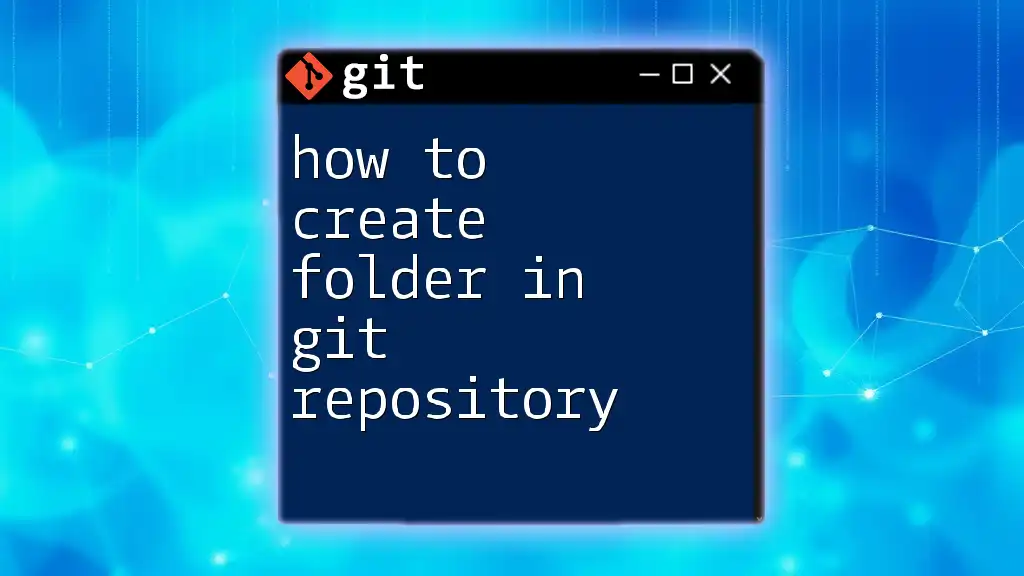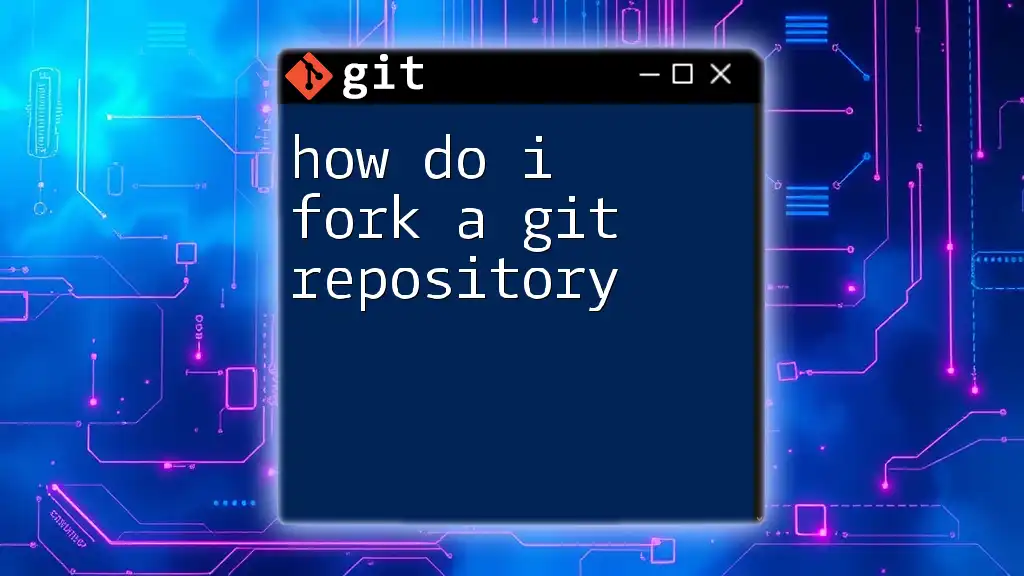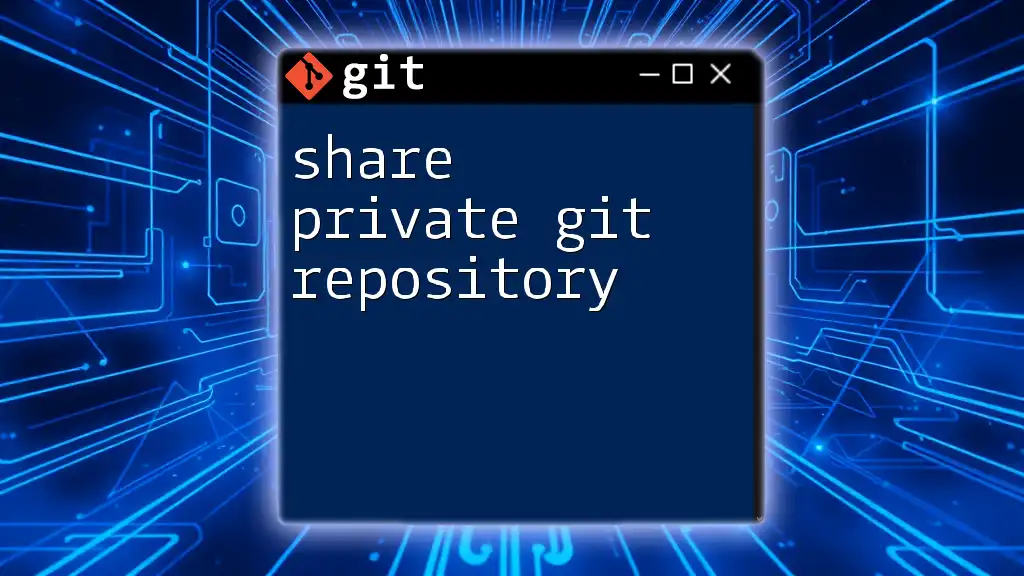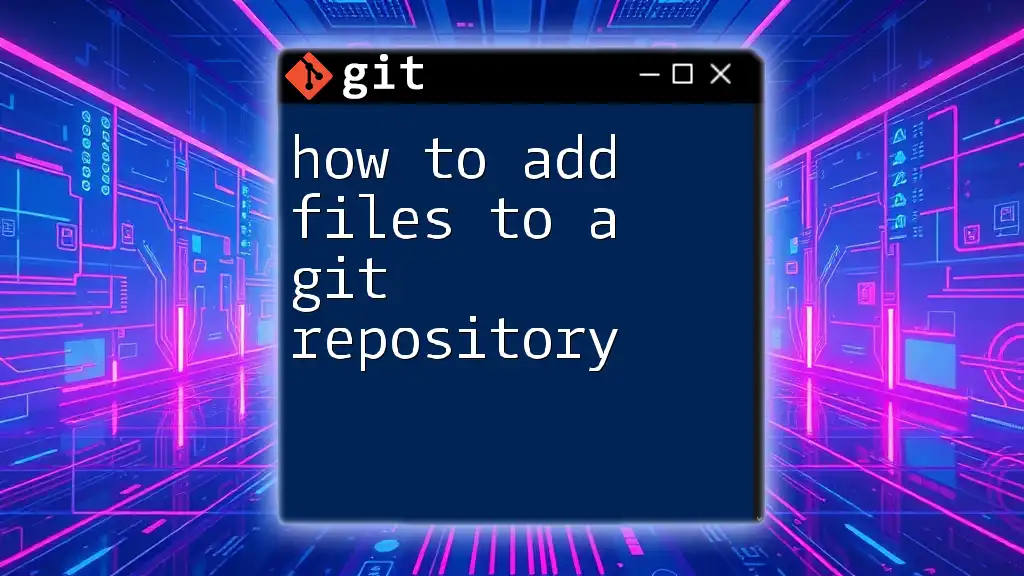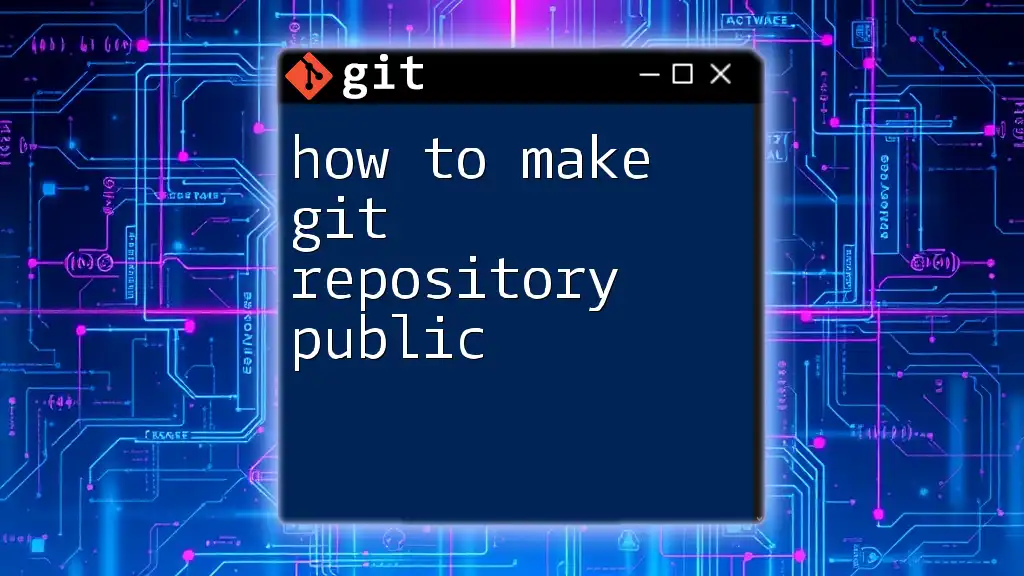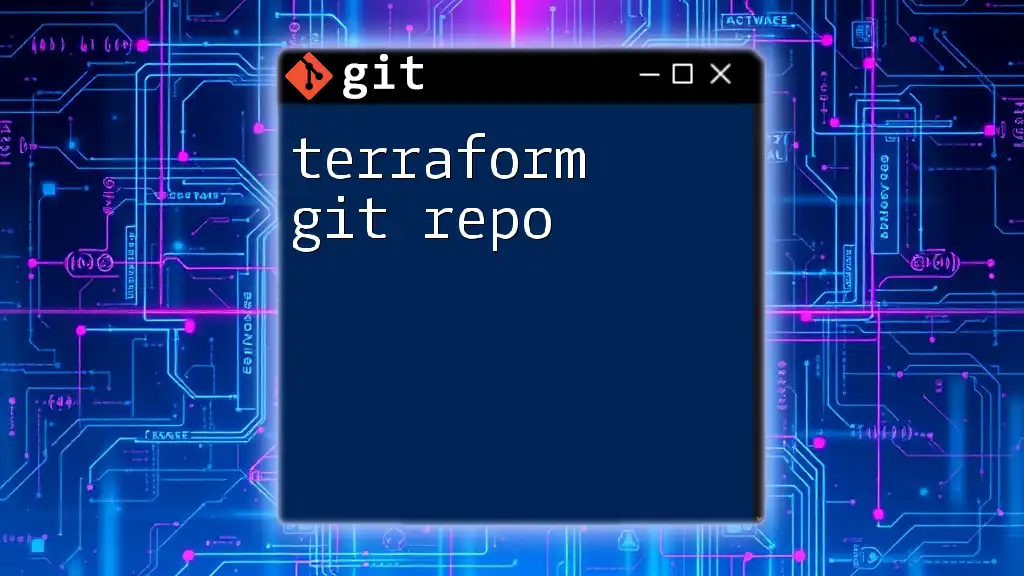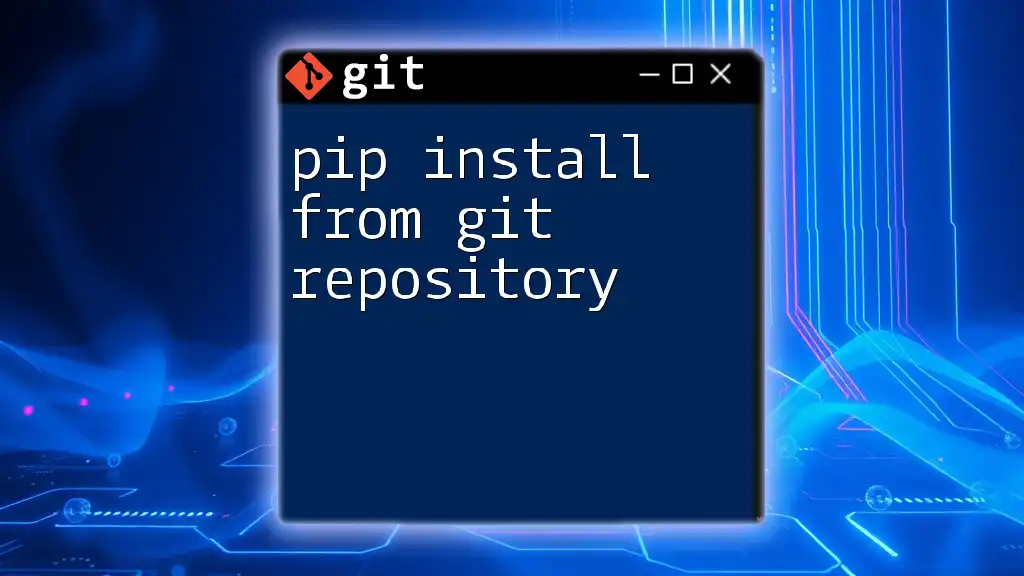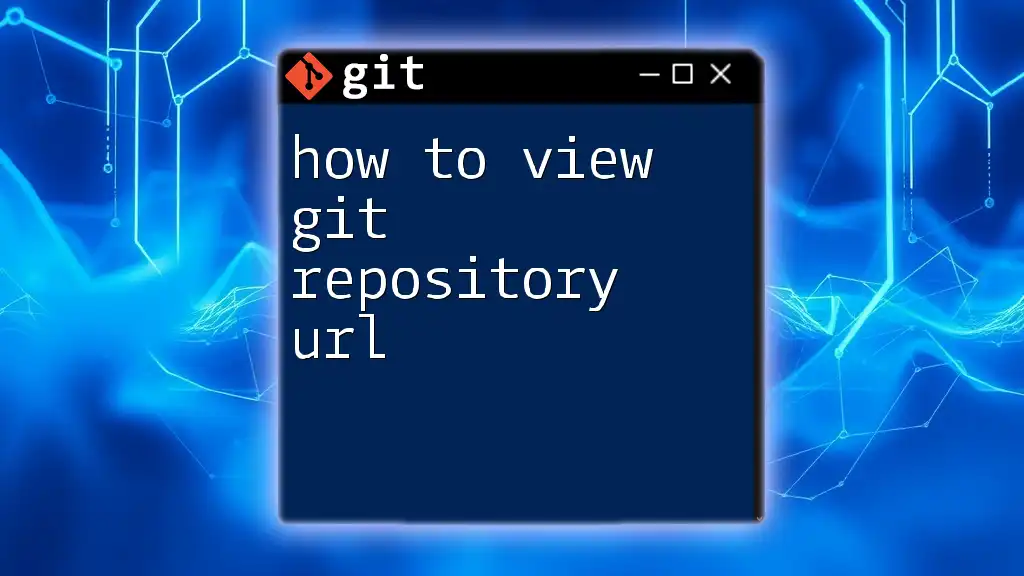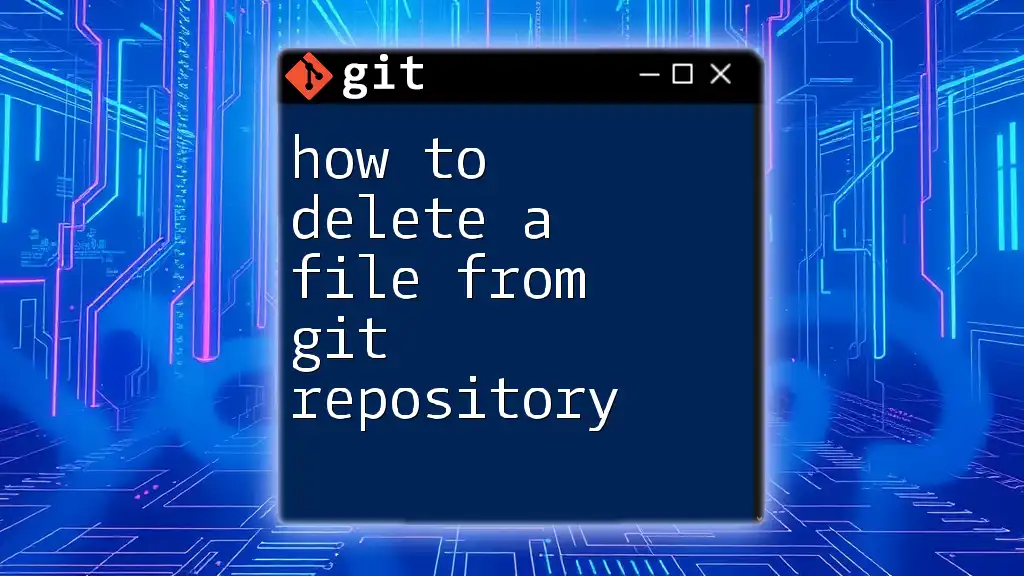To create a folder in a Git repository, you can use the `mkdir` command followed by `git add` to stage the new folder for a commit, as shown below:
mkdir new_folder && git add new_folder
Understanding Git Repositories
What is a Git Repository?
A Git repository is a storage space where your project files and their version history are kept. In Git, there are two main types of repositories: local and remote. The local repository resides on your computer, allowing you to work offline, while a remote repository, such as one hosted on GitHub, can be accessed by multiple collaborators.
The organization of files into folders is crucial within a repository. It helps keep your project tidy and makes it easier to find specific files, especially as a project scales. A coherent directory structure is vital for seamless collaboration among team members.
Key Git Concepts Related to Folder Creation
To effectively manage folders in a Git repository, it's essential to understand some key concepts:
- Commits: These are snapshots of your project at a specific point in time. Each commit records changes made to your files and folders.
- Branches: Branches allow multiple versions of a project to exist at the same time. When creating new features or making significant changes, it’s common to create a new branch.
- Staging: This is the process of preparing your changes before making a commit. Only files that have been staged will be included in the next commit.
Understanding these concepts reinforces the need for a well-organized folder structure in your repository, facilitating easier collaboration and change management.
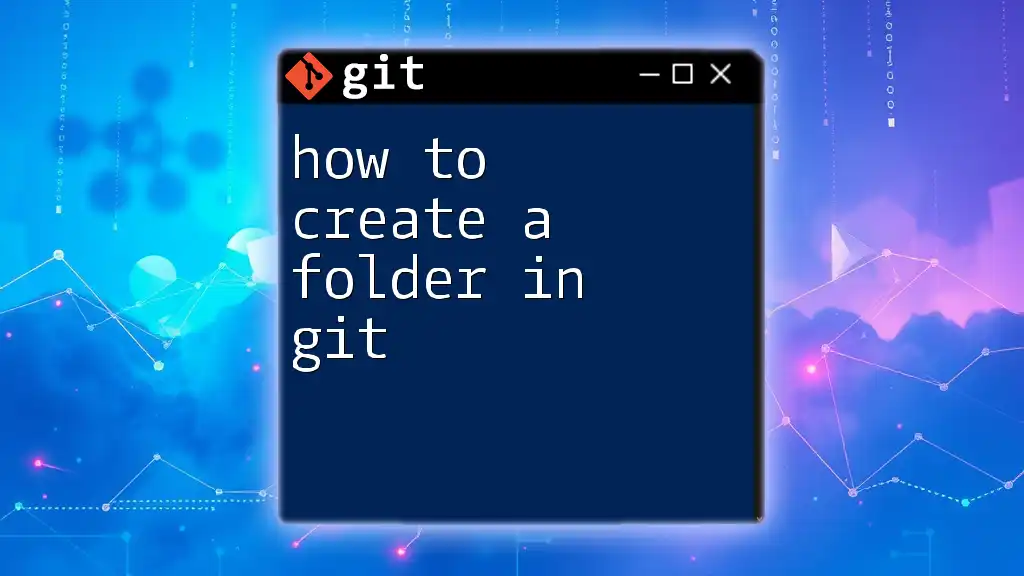
Creating a Folder in Your Local Git Repository
Using Command Line Interface (CLI)
Navigating to Your Repository
To create a folder in your local Git repository, first, open your terminal and navigate to the repository where you'd like the new folder to exist. Use the `cd` command:
cd path/to/your/repository
Make sure you are in the correct directory before proceeding to ensure that you are working in the right project.
Creating a New Folder
Once you're in the desired repository, you can create a new folder using the `mkdir` command, which stands for "make directory." Simply type:
mkdir new-folder
This command will create a new folder named `new-folder` in your current directory. The `mkdir` command is a straightforward and efficient way to add directories as your project grows.
Verifying Folder Creation
Checking the Folder Exists
To confirm that your new folder was successfully created, use the `ls` command to list the contents of the directory:
ls
You should see `new-folder` listed among other files and folders. If it appears, you have successfully created your folder!
Understanding Folder Hierarchy
Keeping track of your folder hierarchy is essential as it directly impacts your project’s organization. Knowing where each file and folder resides can prevent confusion and make your project easier to navigate.
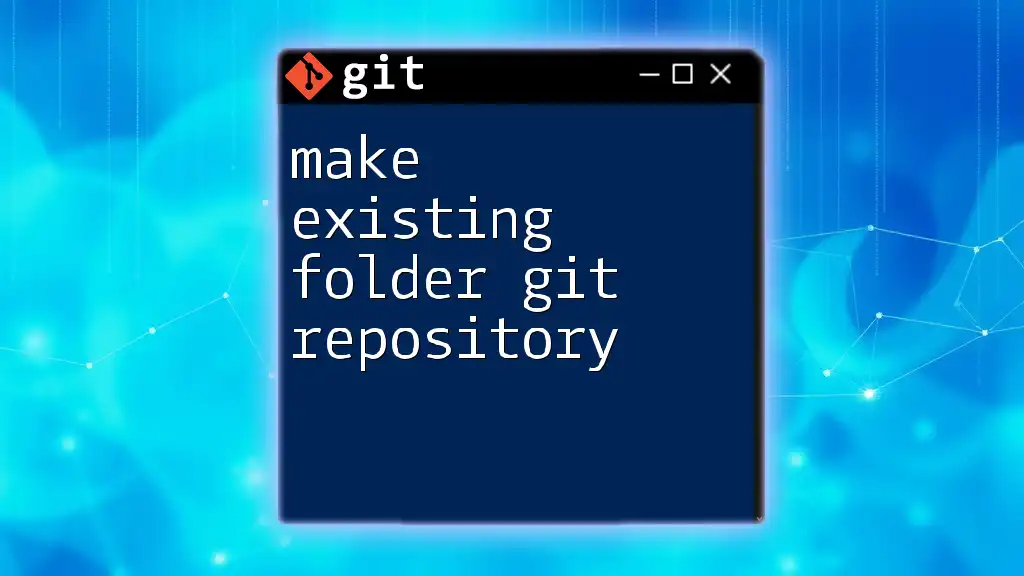
Adding the New Folder to Git
Staging the New Folder
After creating the new folder, you need to stage it so that Git recognizes it. Use the `git add` command as follows:
git add new-folder
This command stages the folder, preparing it for the next commit. It’s essential to understand that without staging, your new folder will not be part of your project’s version history.
Committing Your Changes
Once the folder is staged, it’s time to finalize the changes by committing them. Use the following command, making sure to include a meaningful commit message:
git commit -m "Added new folder"
A good commit message provides context for the changes made, helping collaborators (and future you) understand the project’s evolution.

Creating a Folder Directly in a Remote Repository (GitHub)
Using GitHub Interface
Sometimes, you may want to create a folder directly in your remote repository on GitHub. Start by navigating to your repository on GitHub.
Creating a New Folder on GitHub
In the GitHub interface, click the Add file button, then select Create new file. In the filename field, type the name of your new folder followed by a `/` (for example, `new-folder/`) and then add a file name (e.g., `README.md`). GitHub requires at least one file to create the folder.
This is a great way to directly manage your repository’s structure without using the terminal.
Pushing Changes to Remote Repository
Once you've made changes locally, it’s essential to push your commits to the remote repository. Use the following command:
git push origin main
Here, `main` refers to your branch name. Make sure you adjust it if you are working on a different branch. Pushing changes ensures that your remote repository reflects the local changes you've made.
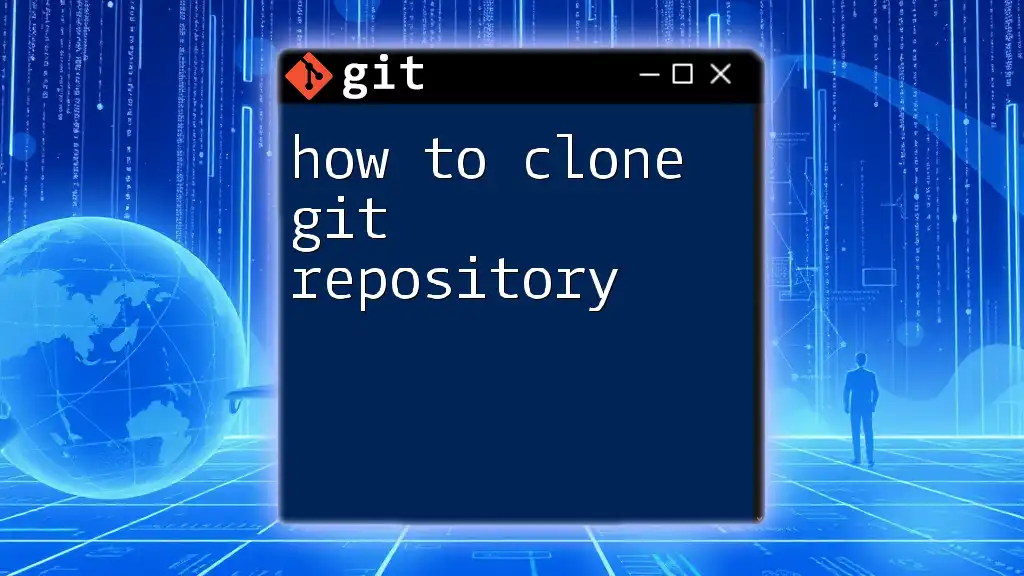
Common Issues and Troubleshooting
Folder Not Showing in Repository
If you notice that your folder is not appearing in the repository, ensure you staged and committed the folder correctly. If it still doesn’t appear, refresh the view or check if you are on the correct branch.
Permissions Issues
Permission errors while creating folders or pushing changes can occur. If you encounter such errors, check your access rights to the repository. You may need to adjust your Git configuration or request permission from the repository owner.
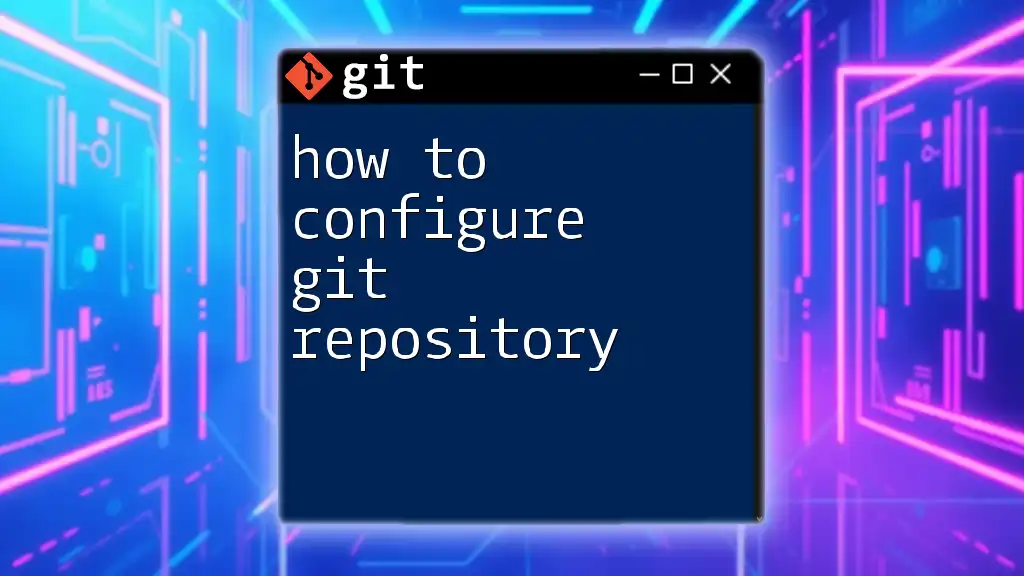
Best Practices for Organizing Folders in a Git Repository
Naming Conventions
Choosing clear and descriptive folder names is crucial. Avoid using vague terms that may confuse team members. For instance, instead of naming a folder `temp`, use `temporary-files` to provide context.
Structuring Your Project
Planning an effective folder structure can save time and frustration later. For larger projects, consider using a structure similar to:
project-root/
│
├── src/ # Source files
│ ├── components/
│ ├── utils/
│
├── docs/ # Documentation
│
└── tests/ # Test files
This organization enables easy navigation through different project components and can enhance collaboration amongst team members.
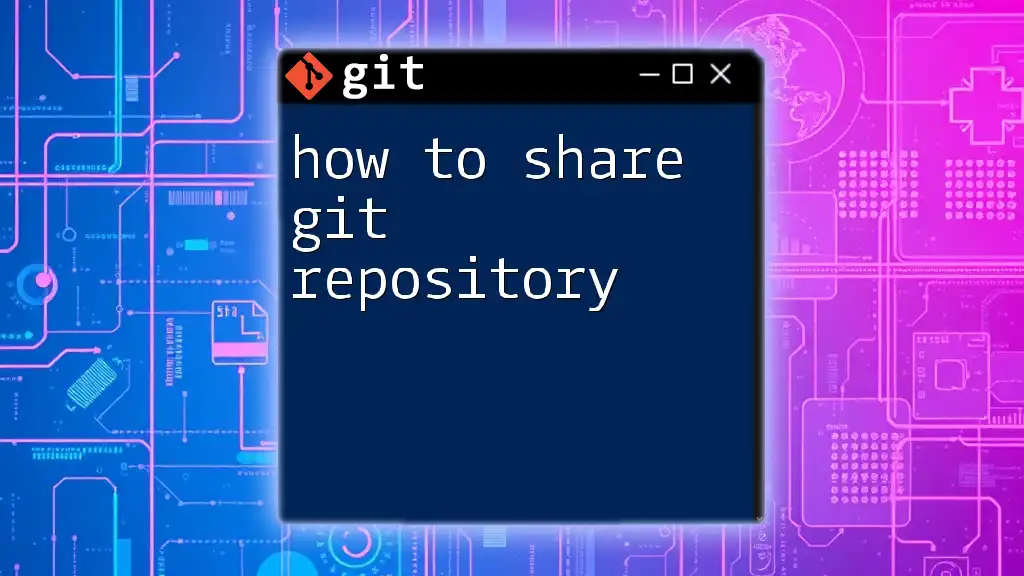
Conclusion
Creating folders in a Git repository is a straightforward process that can significantly improve your project organization. By following the above steps, you'll be able to create, add, and manage folders effectively, enhancing both your workflow and collaboration with others. Practicing these commands will solidify your understanding of how to work with directories in any Git repository.
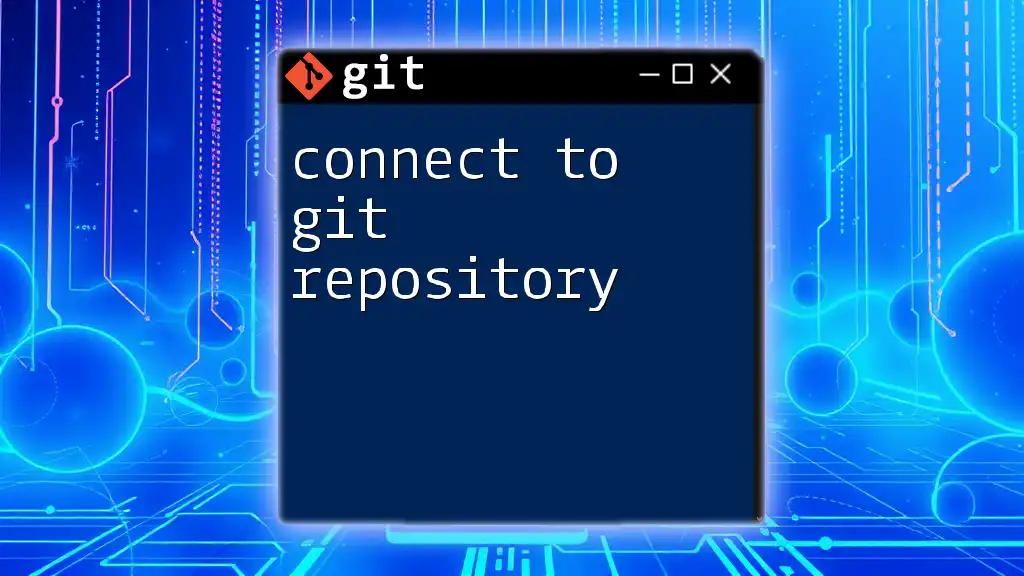
Additional Resources
For further learning, consider exploring the official Git documentation or other authoritative tutorials on Git. If you're looking for personalized assistance, feel free to reach out to our services for guidance and more in-depth training on using Git effectively.

